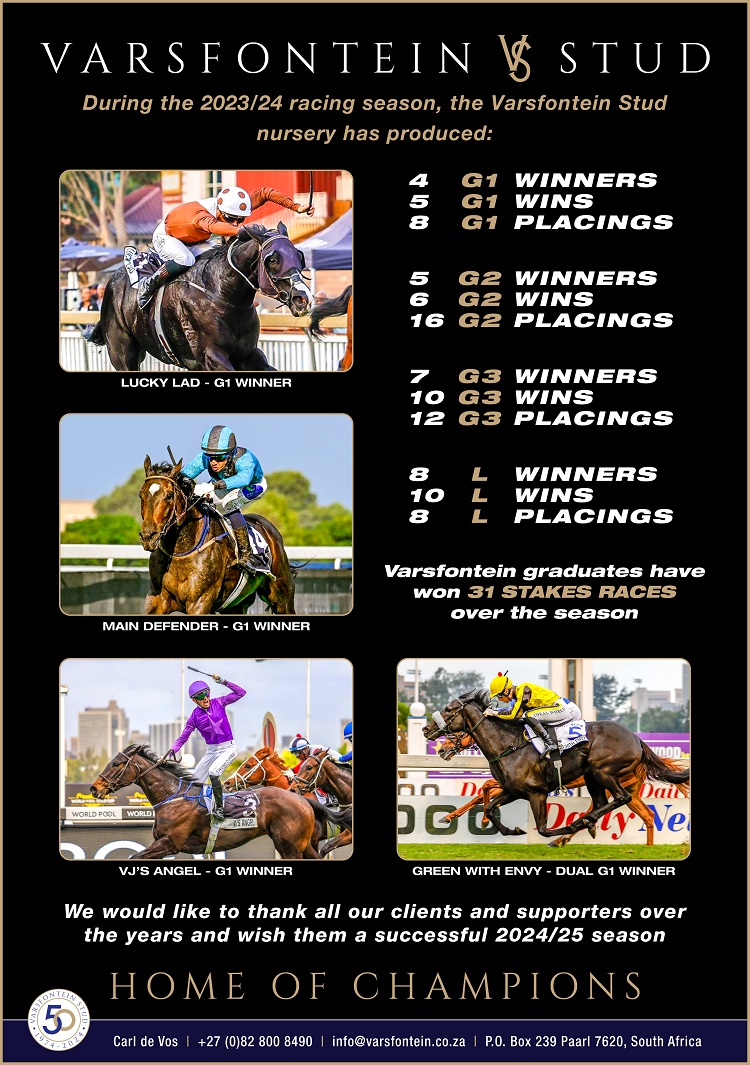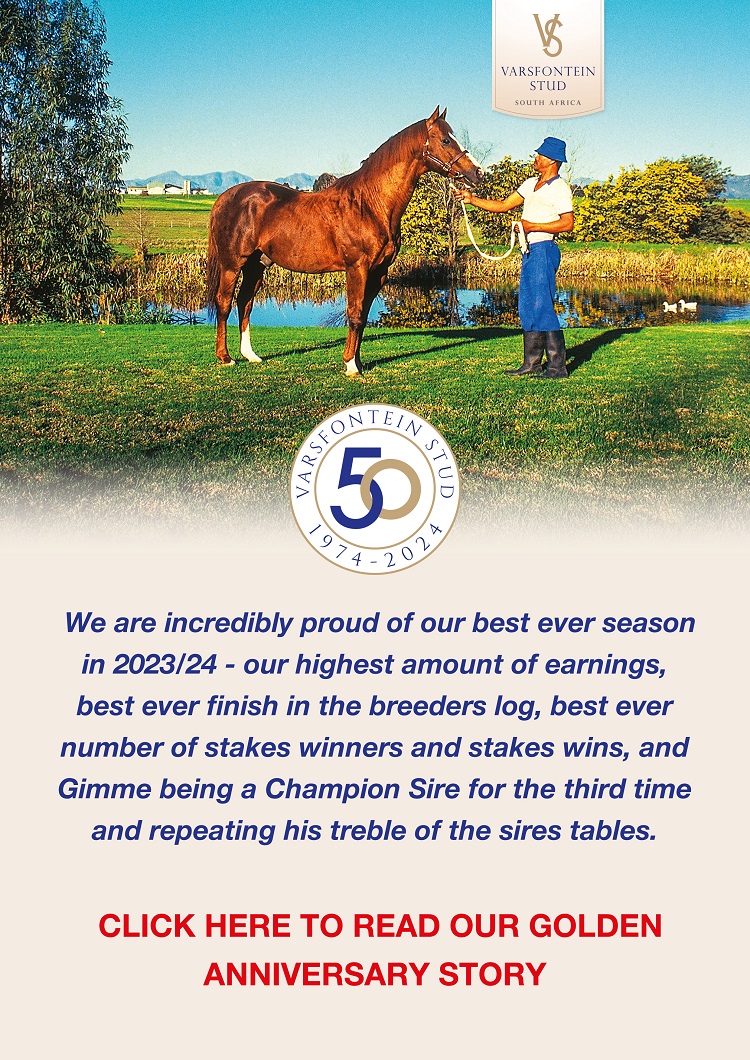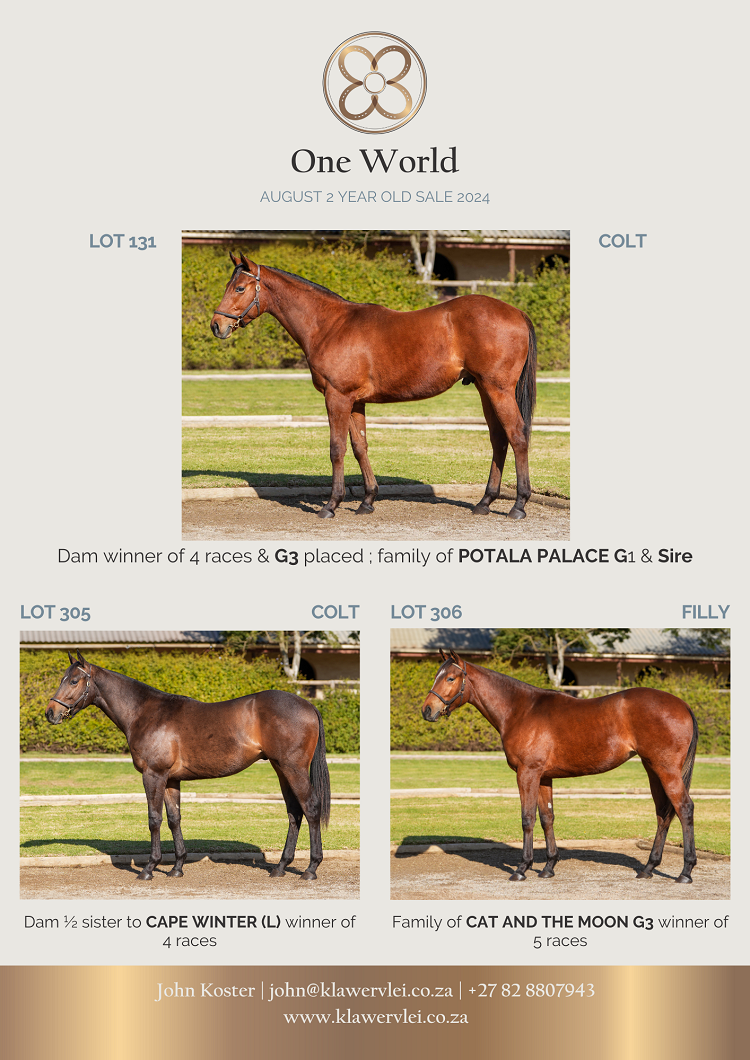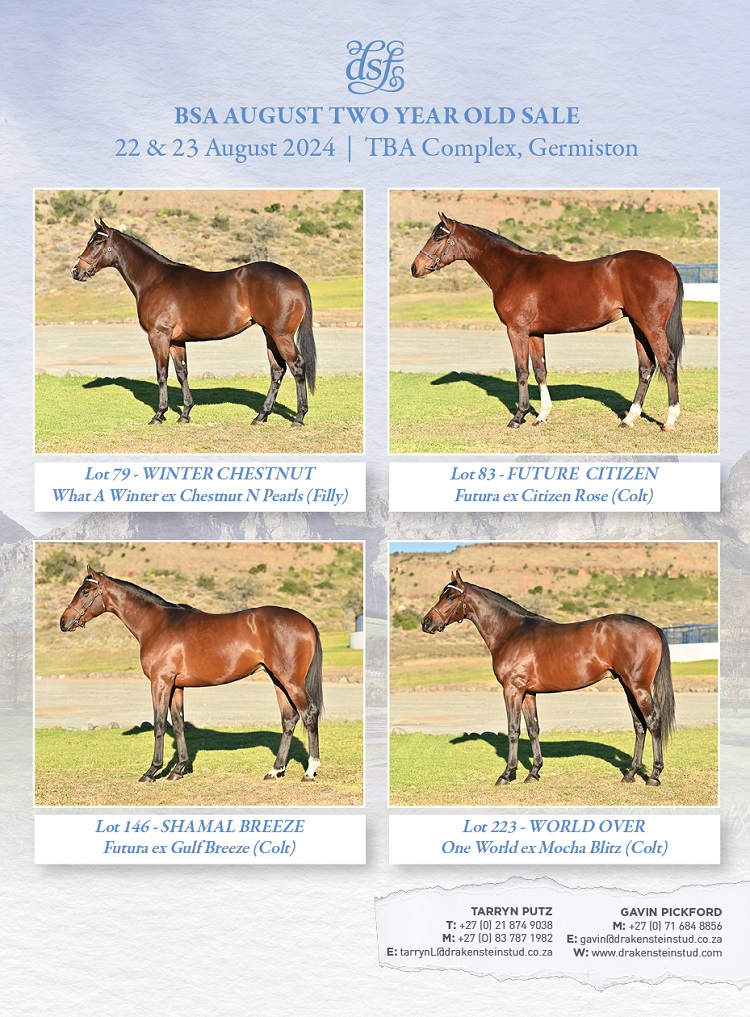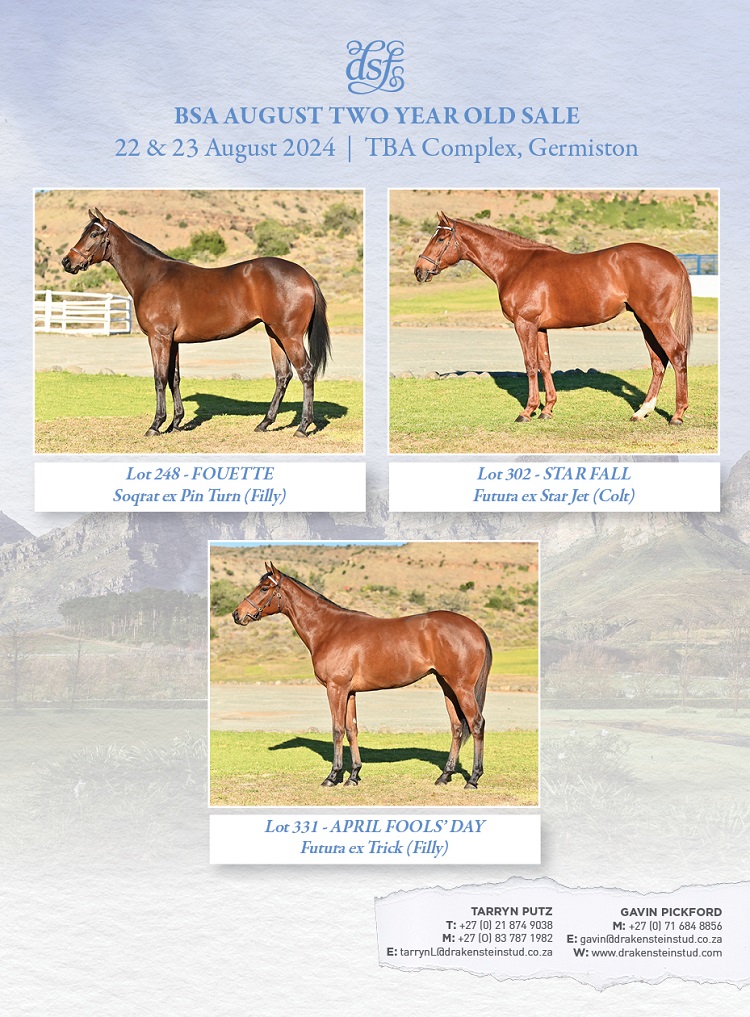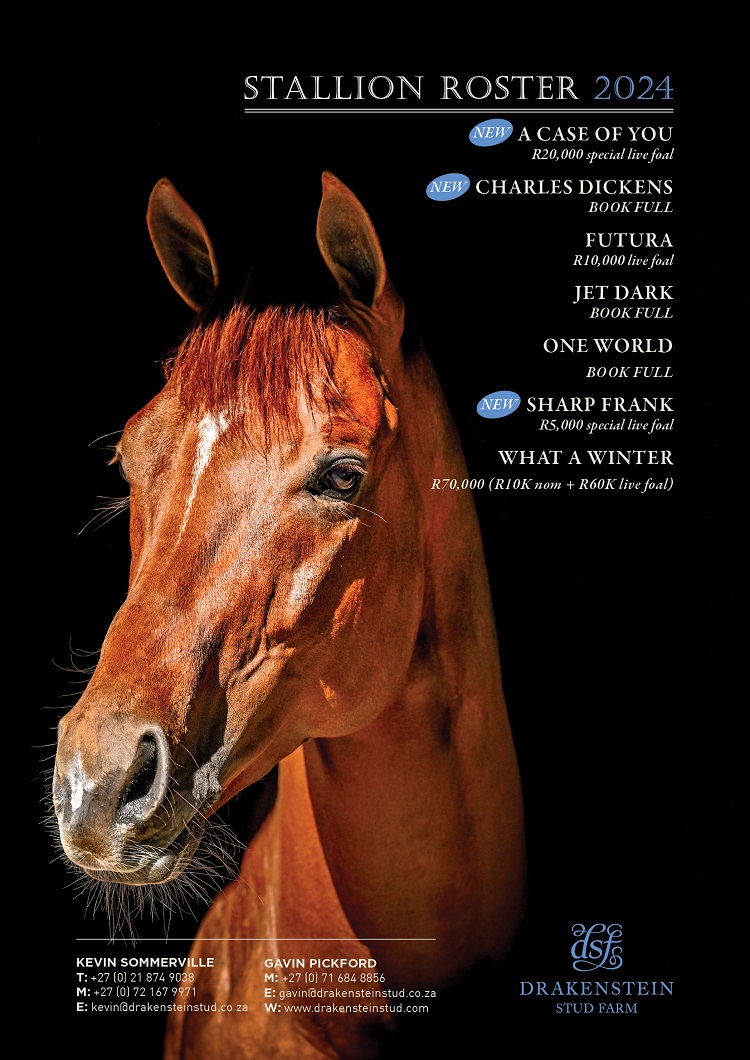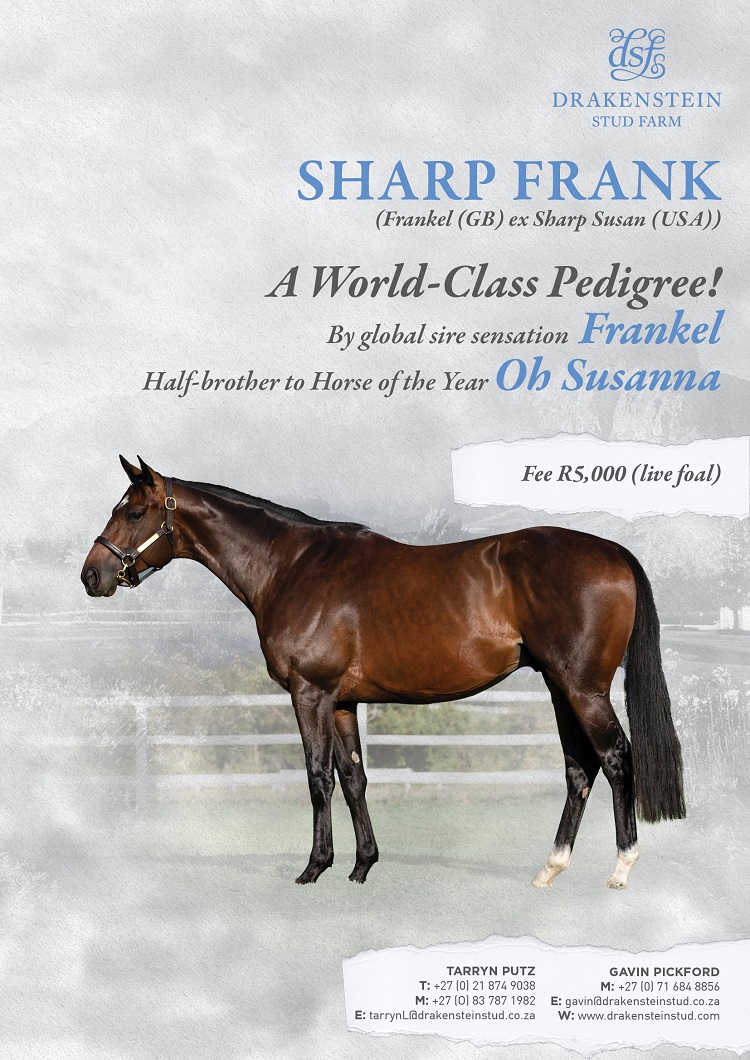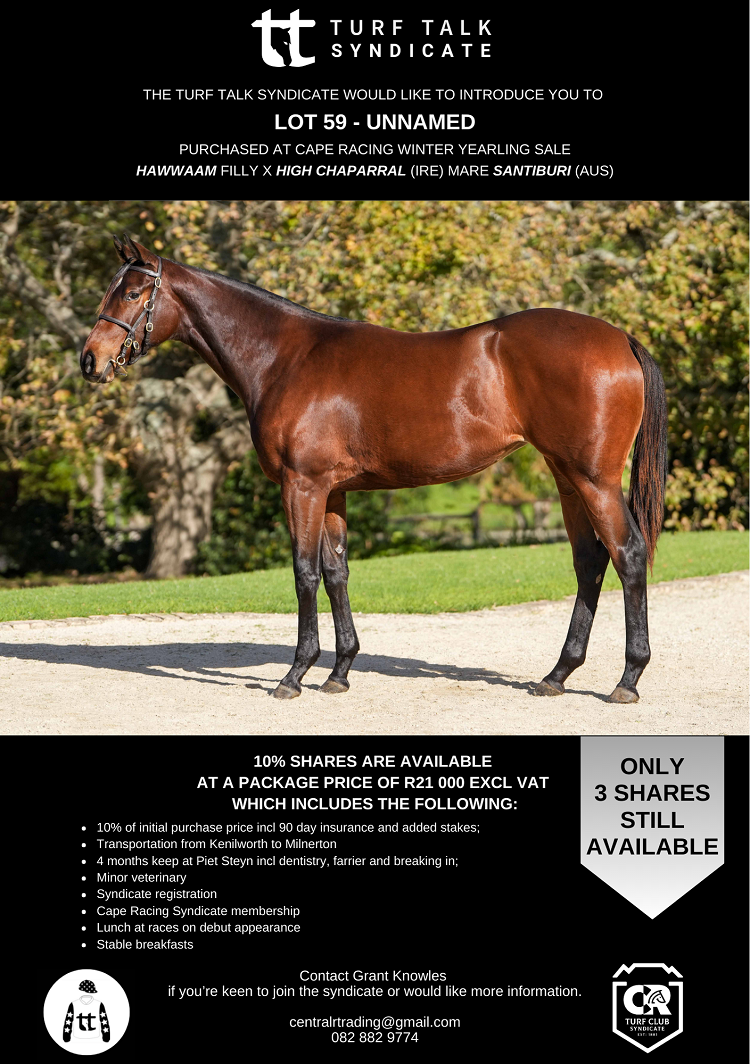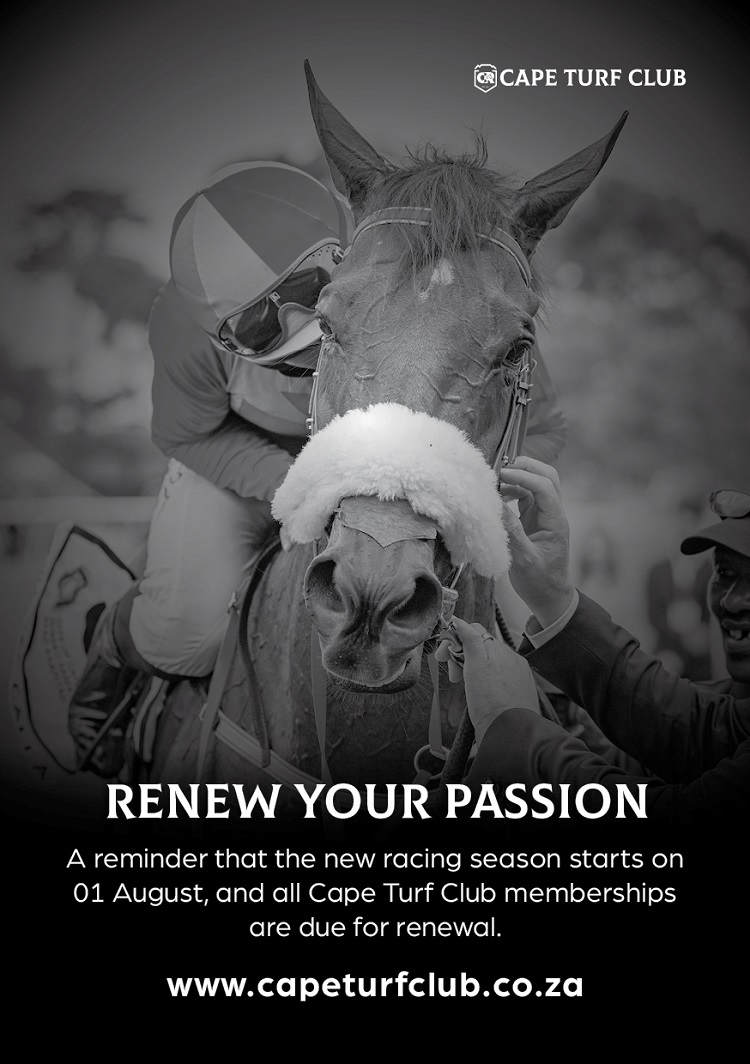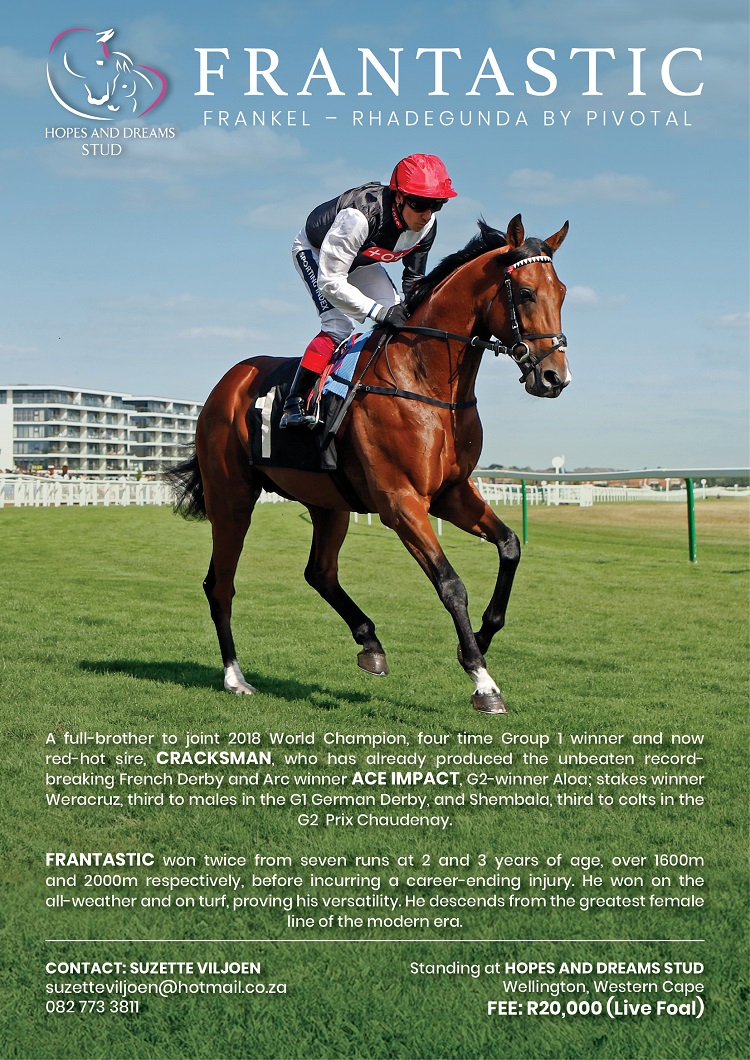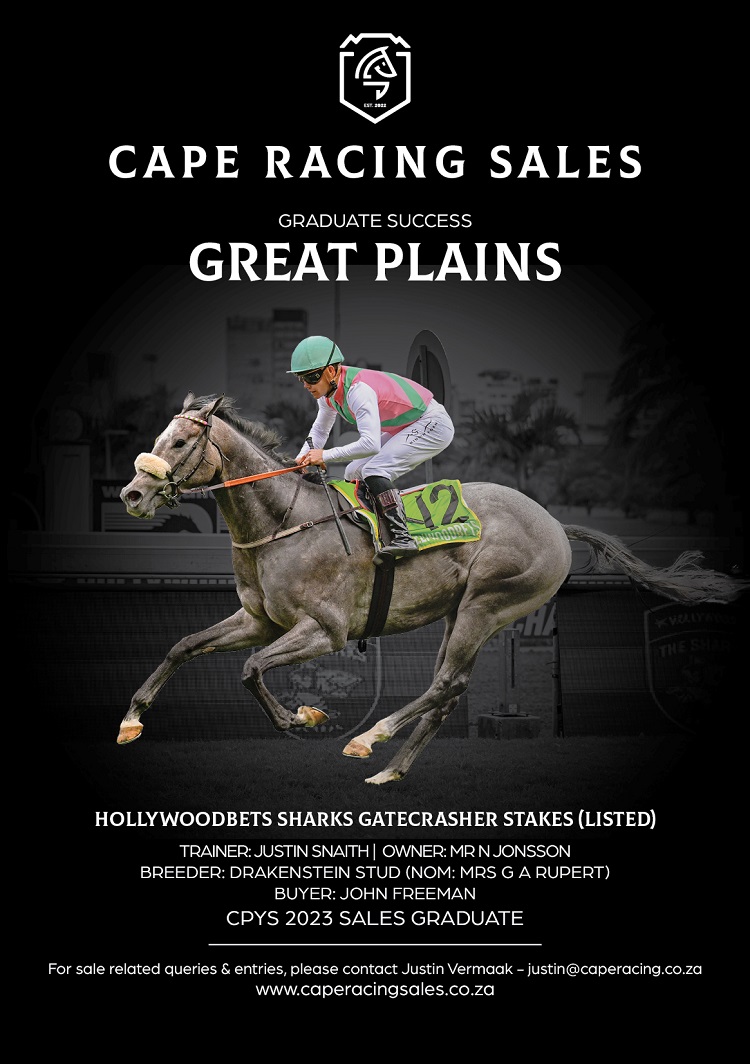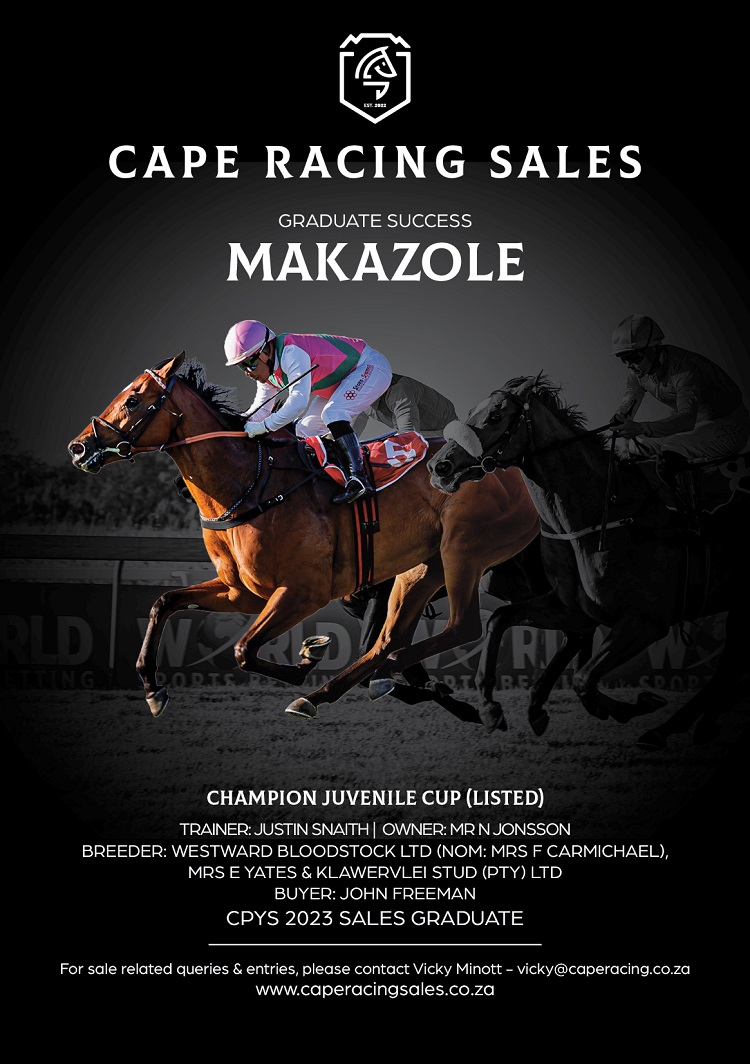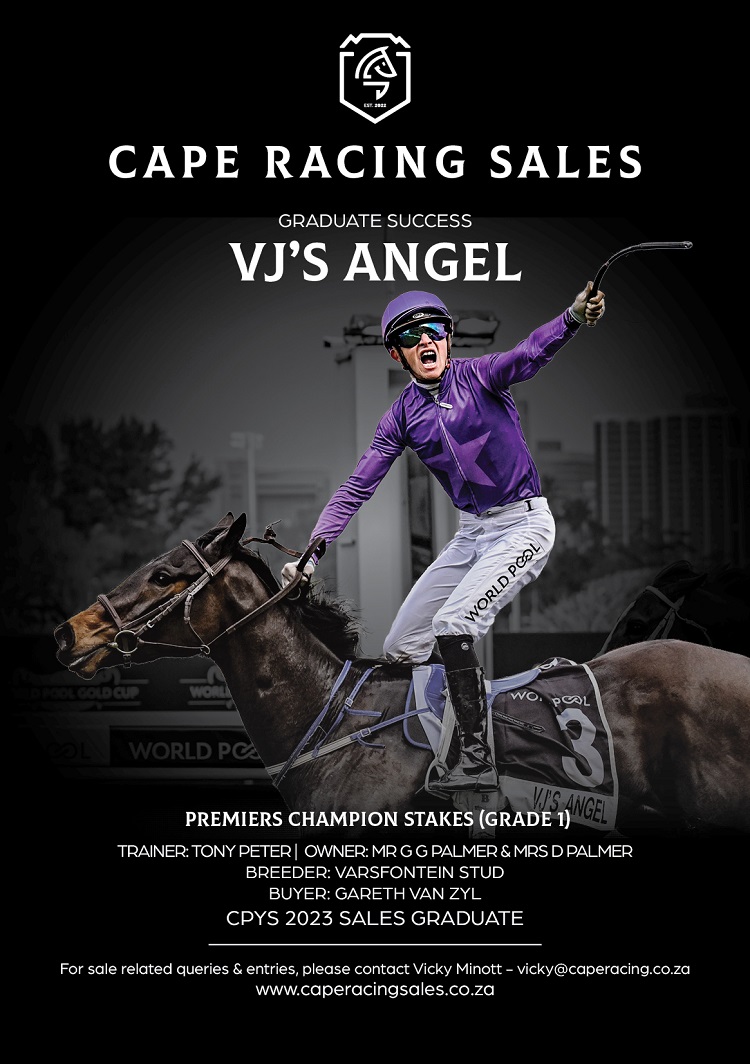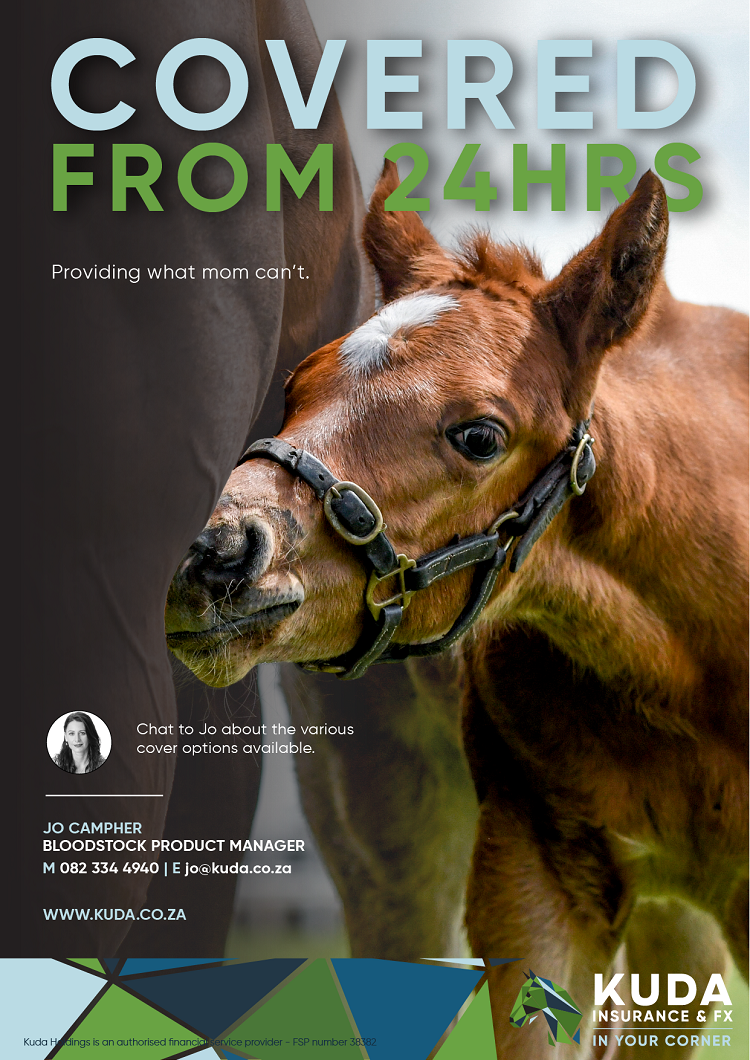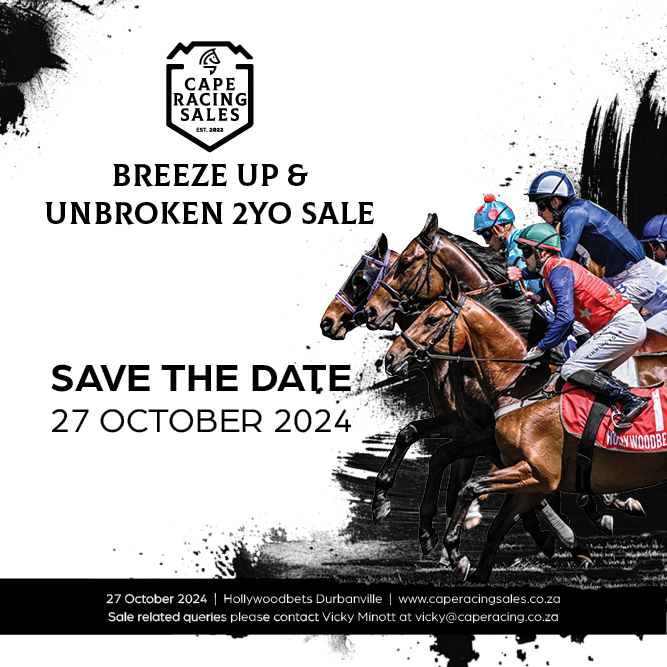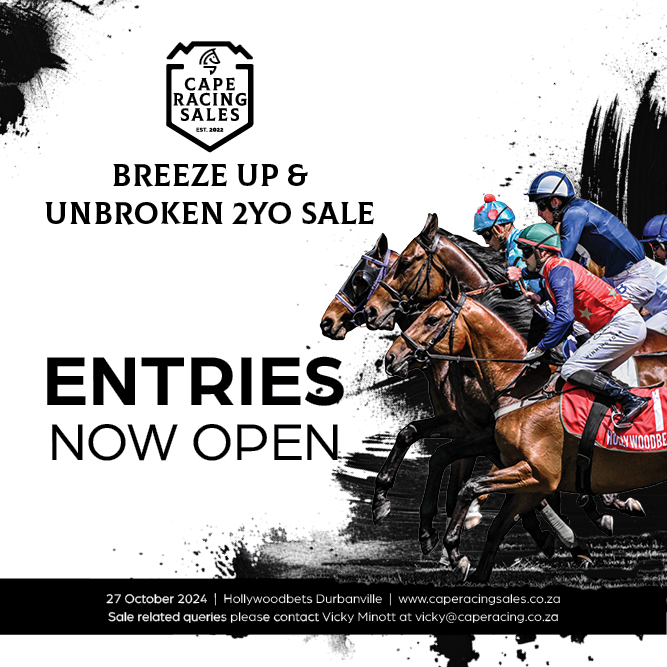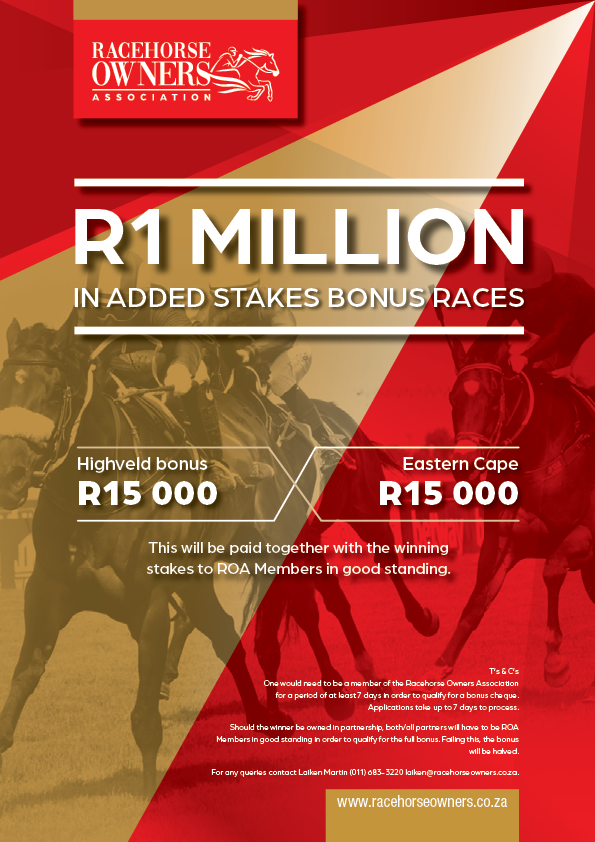
Blue Holly Can Do It At Hollywoodbets Durbanville
Blue Holly has been tipped to win the last (Picture: Wayne Marks)
Graeme Hawkins (Gold Circle)
Following a few days of clear skies, the chances of racing going ahead at Hollywoodbets Durbanville look reasonable, although there are showers forecast for tomorrow. The 10-race programme is scheduled to get under way at 12:15 with the running of a Maiden Plate (F&M) over 1000m. The presence of four well-bred debutantes from good draws does muddy the water somewhat, but on form From A Distance appears the one to beat. Runner-up in her last two starts and with Aldo Domeyer aboard, From A Distance appears to be the stable elect and could prove too good for Champagne Kisses, Elizabeth Grace and Timeline. The latter is one to watch out for, as she sports blinkers for the first time and could show significant improvement.
The second race and first leg of the Bipot, the R200 000 Restricted Maiden Plate over 1250m, sees King’s Quest go head-to-head with Captain West and Let It Be Said. But here again there are a few choicely bred newcomers with particular reference to On My Honour, My Archangel and Mr Fox.
Interestingly, Grant Van Niekerk gets off the much improved Let It Be Said to ride My Archangel for the Lucinda Woodruff stable, and any market support must be respected. As we approach race time, the betting could well be the best guide as to how one structures the opening leg of the Bipot.
Cumbre Vieja looks the part in the third race, a Maiden Plate over 1400m. Trained by Vaughan Marshall, the son of Erupt has been knocking loudly at the door and the addition of blinkers to his equipment could see Cumbre Vieja hold sway over Arbitration and the potential improver Commander Green. Cumbre Vieja will be ridden by Sean Veale who has been riding up a storm across the country during the opening weeks of the new Season. Candice Bass-Robinson’s pair, Plus Four and Red Dawn, have the form to be in the mix but are drawn awkwardly.
The opening leg of the Pick 6, a Maiden Plate (F&M) over 1400m, looks competitive but the extremely well-bred Trippi filly, Little Suzie, should take a step forward from her promising debut when second behind Spoil Yourself at the country course at the beginning of the month. Little Suzie is out of the Met-winning mare Oh Susanna and from pole position she should get the run of the race. Festival Chic, White Waters (blinkers first time) and Pretty Precious have all shown promise while there could be improvement to come from Kortvandraad.
Green Mandarin will be looking to register his fourth consecutive victory when he takes on seven rivals in the sixth race, a Class 3 Handicap over 1800m, and the late-developing 5yo son of Gimmethegreenlight could defy a further 5-point hike in ratings. That said, Blue Bay is weighted to turn the tables on Green Mandarin but has not been seen since April. He is reported to be working well at home and a “competitive” run is expected by the Crawford stable. Otto Luyken is coming back to best form and is another to consider for all permutations.
King Pelles was an unlucky loser last time when beaten a nostril by Sudden Song and he could make amends in the seventh race over 2000m. Prime Venture let us down badly in that same race, but he came away with excuses and should do better here while Midway, a recent Maiden winner, appears to have a lot more improvement to come. The Rafeef filly, Heliotrope, is well handicapped in this Cape C Stakes event and cannot be ignored.
Course and distance suited Veronique is in good form at present and she could prove superior to her limited opposition in the eighth race, a Class 5 Handicap (F&M) over 1250m. The only other previous winner at Durbanville is Protect The Dream, who shed her maiden ticket at the third time of asking, but she may struggle to concede 7kgs to the more seasoned Veronique. These Class 5 Handicaps can produce strange results from time to time, but I am going to take my chances and row in with Veronique, who seems to get on really well with Grant Van Niekerk.
The ninth race on the card is extremely competitive but in the tenth race, a Cape B Stakes over 1000m, I have been waiting for Blue Holly to return to Durbanville where she has won three of her four starts to date over the minimum trip. Blue Holly faces a tough test here against the likes of Dean Street, Porque Te Vas and Franz Lehar but I am happy to take my chances with Blue Holly and suggest that the daughter of Gimmethegreenlight, trained by Glen Kotzen, could be one of the more appealing value bets for the afternoon.
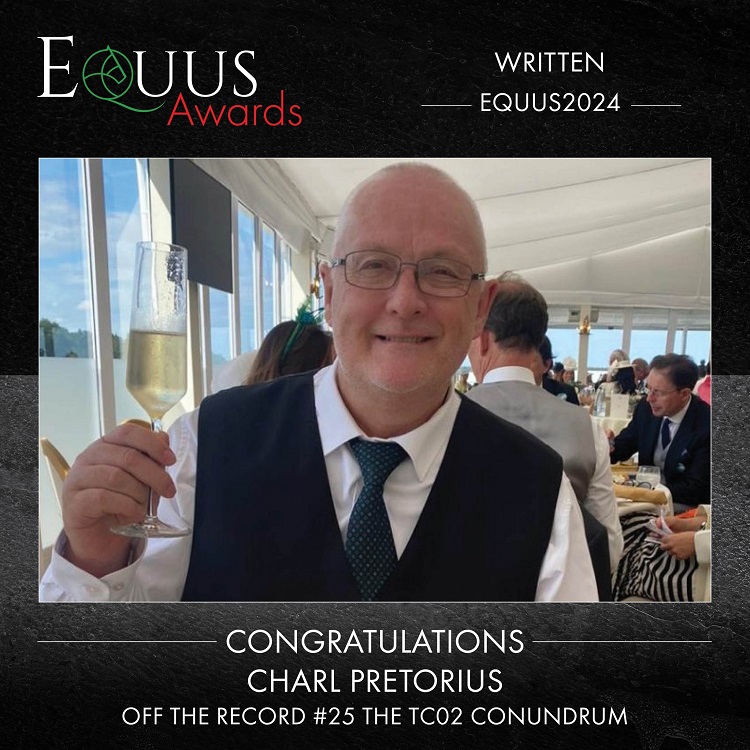
Charl Pretorius' Equus Award-winning Article
Charl Pretorius has contributed superb articles and books to the industry for decades and was a most deserved winner of the Equus Print media award. His books include Horse Chestnut: The Story Of A Legend; Legends Of The Turf; Legends Of The Turf Volume 2: Rare Profiles From South African Horseracing History; Thoroughly!: Seven decades in the Sport of Kings and Crooks (Ormond Ferraris autobiography); Ten Habits of Highly Effective Horseplayers. All of them are available on Amazon and some can be found at bookshops.
His latest contribution has been a magnificent column called Off The Record, which appears on the Tab4Racing website weekly. Any number of the superb 38 feature articles he has penned for this column could have won the Equus Print media award but it went to one entitled the “TCO2 Testing Conundrum” which the judges pointed out was “cutting edge journalism. covering all facts and getting balanced views from defence and attack, so many years in racing and this man has not lost the essence of journalism.”
Read the Equus Award-winning article below:
The TC02 Testing Conundrum (Charl Pretorius – Off The Record)
The South African racing industry is divided in leadership, opinions, and future vision, but there are two fundamental aspects that garner widespread agreement: the protection of the thoroughbred racehorse and professional control and policing of the sport. Measures have been instituted on the horse protection side, but are we getting the policing right? Are our resources devoted to the right channels? What is fact, and what is conjecture?
The National Horseracing Authority, mandated and under increased pressure to identify trainers who use illegal methods to gain an advantage, last month introduced a new specimen analysis procedure for TCO2 (total carbon dioxide) measurement on a race day. These are tests performed on the blood samples of racehorses to combat the practice of administering alkalizing agents for the purpose of enhancing performance.
For those who are still uncertain of how this works: Blood specimens are taken from selected horses approximately 50 minutes prior to race time, on any given race day. The specimens are immediately analysed using handheld blood gas analysers. When a sample taken is found to have an elevated pre-race blood TCO2 level above of 36 millimoles per litre (mmol/L) – the threshold set by the International Horse Racing Federation (IFHA) and prescribed to by the NHA – a second blood specimen is collected, between 10 and 15 minutes later. If the TCO2 concentration of the second specimen is more than 36.0 mmol/L, the horse is withdrawn and then detained for additional specimen collection. During the additional tests, screening can be performed for other illegal substances that may or may not be present in the blood sample.
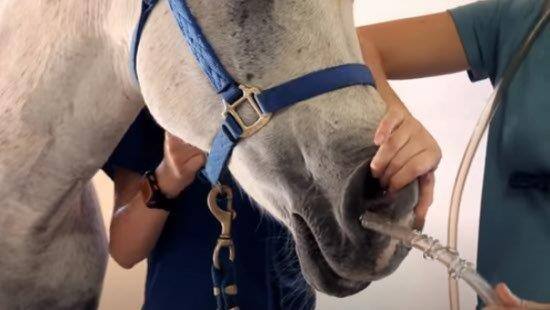
Above: ‘Milkshaking’:The administration of bi-carb via a naso-gastric tube
The administration of sodium bicarbonate (bi-carb) in the hours prior to racing, is viewed by the IHFA as performance enhancing. It is performed using a practice widely known as ‘milkshaking’ – commonly via the insertion of a naso-gastric tube between 3 to 5 hours prior to a race. This is intended to elevate TCO2 and therefore reduce lactate. Three horses have been withdrawn from races due to elevated TCO2 levels since the NHA implemented testing for this violation in recent weeks – two on the Highveld and one in Durban.
The introduction of TC02 testing has drawn active interest from the public from as far as the USA, with most commentators in favour of the procedures.
Team Valor’s Barry Irwin, a prominent anti-drug activist with significant South African racing interests, wrote on a Sporting Post forum: “Welcome to the real world of horse racing. It is about time. This technology has been around for decades. This updated protocol will go a long way in levelling the playing field on the Highveld. Targeting trainers whose horses improve is a proven formula used by regulators worldwide. Not to follow this practice would be wasteful and foolish.”
Michael Jacobs, responding to a posting about the potential additional operating costs involved in additional TRC02 testing, said: “Why, if the regulator puts measures in place to combat and detect doping practices, would these steps be questioned? Are we trying to protect the dopers or the betting public?”
Geoff Logan argued that TCO2 tests will “prove very disruptive to say the least”, and a few others, including ‘Joe King’, suggested that TC02 testing is a result of pressure on the NHA from powerful industry players and that tests are now aggressively performed with focus on specific stables (in reference to Irwin’s suggestion that the Highveld is where milkshaking is giving an unfair advantage to certain trainers).
Graham Niven commented: “What protocol has been put in place to prohibit targeting particular trainers? There have been rumours and certainly evidence of late that trainers whose horses show a marked improvement are suddenly deemed ‘doped’ horses. May I suggest that every trainer with horses on the day draws a chip and either a colour or number is associated to that chip and those are randomly drawn by an independent to minimise targeting.”
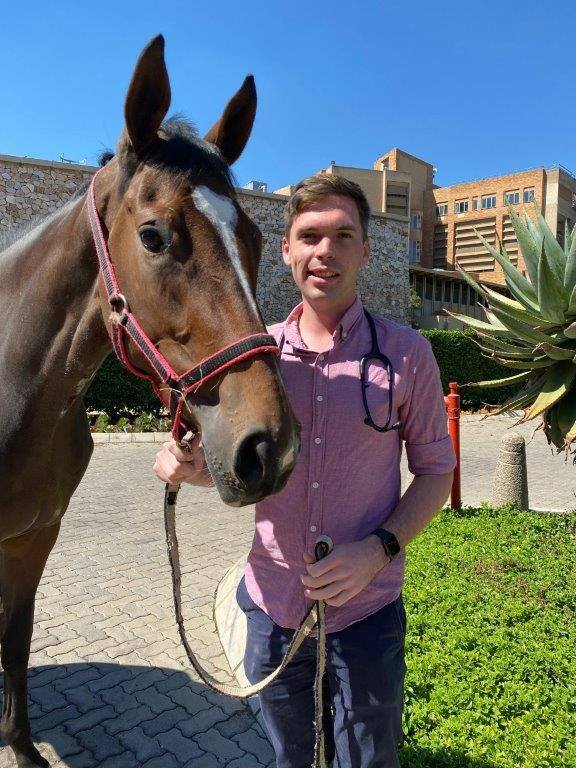
Above: Dr Matthew Bawden
Dr. Matthew Bawden, the NHA’s Chief Veterinarian, remarked: “The main goal of measuring TCO2 before racing is to detect horses that may have received an alkalizing agent. Alkalinization of a horse or the use of an alkalizing agent is prohibited on race day, and a level exceeding the international threshold constitutes prima facie evidence of alkalinization. The administration of an alkalizing agent results in a measurable increase in the TCO2 over time with an intent to achieve maximal buffering capacity at the time of the race.”
The implication here is that a horse could pass the TC02 test before the race, but could possibly fail it afterwards, which presents an interesting conundrum.
The NHA categorizes TCO2 as a Class 2 Prohibited substance, alongside substances such as Ketamine and Morphine. According to the guidelines on the NHA’s website, first-time offenders face a fine of R250,000 and a six-month suspension, while second-time offenders receive a warning off. Interestingly, the NHA does not conduct post-race testing for high TCO2 levels. This is a peculiar situation: There is significant anticipation and warnings regarding the tests, substantial fines that could end careers, but ultimately no actual possibility of punishment due to the absence of post-race positive samples. Yes, go figure.
Things will truly get interesting if penalties of this magnitude are actually dished out, because there will be areas of contention and grounds for legal objections raised in terms of the applicable thresholds, testing procedures, logistical mistakes, victimisation of specific trainers and the reliability of the testing equipment.
A closer look at ‘milkshaking’ presents some sobering scientific views from a number of recognised veterinary authorities.
Dr. Michael I. Lindinger, PhD, the President of the Nutraceutical Alliance, known for its comprehensive research capabilities, wrote in a 2021 edition of Canadian Thoroughbred Magazine: “The threshold for the TCO2 test set by the IFHA is not based on physiological data, but rather statistically manipulated data obtained from thousands of racehorses on race day, in varying conditions of health, and in varying conditions of hydration. Most of these studies assume, as opposed to actual knowledge, that horses that tested with a TCO2 greater than 35 mmol/l had been administered an alkalizing substance. This is only an assumption, not fact. This is a very poor justification for a threshold test of a naturally occurring substance. It is wishful thinking, not science.”
Lindinger’s assessment is supported by The Conversation.com, who works closely with university and research institute experts. In their article, Put the baking soda back in the bottle: banned sodium bicarbonate ‘milkshakes’ don’t make racehorses faster, they wrote: “Our analysis included data from eight experimental trials featuring 74 horses. Overall, sodium bicarbonate administration in the hours before treadmill tests or simulated race trials did not improve horses’ running performance in either type of test. In fact, in treadmill exercise tests in which horses were not ridden by jockeys, sodium bicarbonate actually had a very small negative effect on running performance, albeit not a statistically significant one.
“Whereas human athletes might gain a placebo effect from sodium bicarbonate, this is unlikely to apply to horses who don’t understand the intended point of the milkshake. And while some racehorse trainers may be educated in exercise physiology and the importance of blood pH, others may believe they work simply because received wisdom and racing folklore say so.
“The controversial and banned practice of giving horses baking soda ‘milkshakes’ before a race doesn’t work, according to our analysis of the available research. Racing folklore says sodium bicarbonate milkshakes can boost racehorses’ endurance because the alkalinity of the baking soda helps counter the buildup of lactic acid in the blood when running. But our systematic research review, published in the Journal of Equine Veterinary Science reveals milkshakes don’t boost horses’ athletic performance.”
***
Testing procedures for TC02 came under scrutiny in the USA in 2013, when the Texas Racing Commission dismissed its case against then leading trainer, Karl Broberg, for an alleged TCO2 violation at Sam Houston Race Park. A second TCO2 complaint against an unnamed trainer whose horse tested above the then 37.0 limit that same night was also dismissed.
TCO2 values vary from instrument to instrument depending on the analytical approach used. Both of the alleged violations were dismissed because the method of collection and handling of blood samples was not compatible with the type of equipment being used to measure total carbon dioxide. The Texas A&M Medical Diagnostic Laboratory, the state’s testing lab, was using a portable blood-gas analyzer.
TCO2 levels are more accurately measured with TCO2 analyzers, rather than blood-gas analyzers. Those machines can give elevated TCO2 readings if the blood cells are not separated from serum through centrifugation (spinning a sample at high speeds to separate blood components) within an hour of collection. If the sample is not centrifuged, the CO2 produced inside the blood cells can diffuse into the serum. In the Broberg case, the sample that resulted in a 42.9 TCO2 reading (well above the 37.0 legal threshold) also had a potassium ion level that was off the charts, suggesting sample degradation.
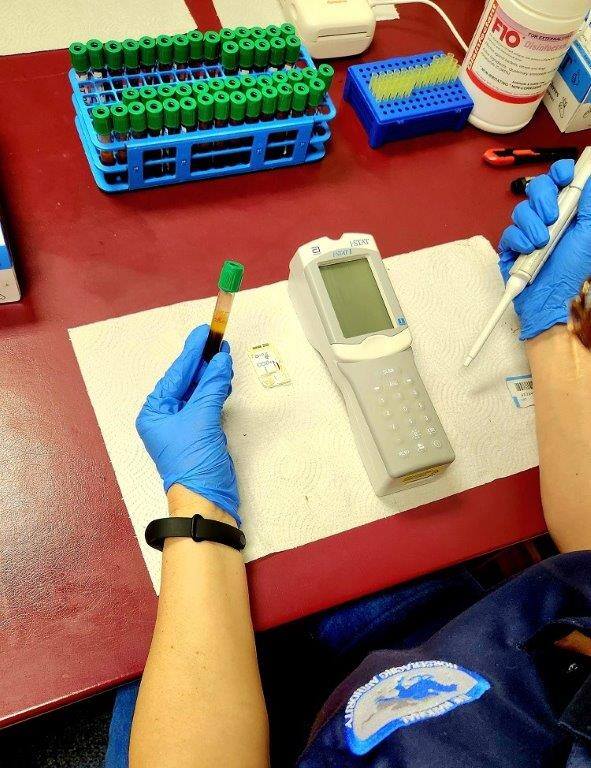
Above: TC02 testing with hand-held analysers
The NHA’s CEO, Vee Moodley, said in response to a query that the NHA are using “approved and validated hand-held blood gas analyzers which measure the total carbon dioxide”. The samples are not centrifuged. Blood collected for on course TCO2 analysis is analysed as whole blood within 10 minutes of collection.
International testing for TCO2 varies widely. Ireland changed their protocols in 2021. They took 5966 samples in 2023 (of which 569 were pre-race blood tests). Of the entire total, six (0,1%) race day positives were brought before the Irish Horseracing Regularity Board (IRHB), with no TC02 positives stipulated in the IHRB’s Year-End report. Testing is not performed at all in Japan, where horses are under surveillance and officials believe they are not likely to be ‘milkshaked’.
In Singapore there has been one TC02 penalty imposed in the last 18 years. In August 2022, trainer HW Tan was found guilty on a pre-race TC02 test at Kranji (37,35 mmol/L). His runner actually competed and finished second. He pleaded guilty and was fined $20,000. Singapore’s Chief Stipendiary Steward Scott Kelly said that post-race analysing of pre-race tests is their standard practice at present. Pre-race samples are not immediately analysed.
Natalie Voss reported in an article published on The Paulick Report: “A study published in the Equine Veterinary Journal in 2006 showed a number of other factors associated with TCO2 levels, including gender (male horses tended to have higher TCO2 levels), class of race (maidens tended to have lower TCO2), finish position (horses hitting the board had higher TCO2 than those that did not), and oddly, cloudy weather. It’s unclear what caused these differences, and whether TCO2 levels explained a horse’s performance (with a better performance being a result of higher TCO2) or if TCO2 readings were more a marker of a given horse’s fitness. The study also found trainer- and horse-specific trends, which doesn’t necessarily suggest trainers in the study were intentionally manipulating TCO2 levels. It is possible that different barns might create different environments for TCO2 readings given their combination of feed and exercise programs.
From the results of a 2022 study, updated in 2023, the Journal of Veterinary Science assessed: “From the statistical analysis of TC02 measurements taken of screening samples from Thoroughbred and Quarter Horses in Louisiana during a 12-month period, a clear seasonal variation has been identified, with higher concentrations of TC02 being reported in winter and spring months in comparison to summer months.”
Dr. Lindinger wrote in another article published in the Journal: “Racing jurisdictions have attempted to justify the use of a single measurement, namely TCO2, as a means of positively and definitively identifying the administration of alkalinizing substances to racehorses. However, there is by no means consensus amongst equine researchers with the majority of equine physiologists advocating the need for multiple measurements and other controls.”
***
Vee Moodley and Dr Mathew Bawden answered further questions presented – reproduced below as given and replied to, with overlapping issues condensed for readability:
You are quoted as saying that the ultimate goal would be for all horses in South Africa to be tested pre-race. Will that require extra staff, is it realisable and logistically foolproof?
VM: Yes, it is definitely possible, we have done approximately 60% coverage and plans are at an advanced stage to achieve 100% over time, in all centres. We are currently in the launch phase for on-course testing and all centres have been tested historically.
How much blood is taken from a horse in this procedure, and would the amount of blood drawn affect a horse’s performance? I’m thinking in this regard of a human blood test where the doctors always warn of things like dizziness and nausea.
MB: Only 4ml of blood is collected pre-race for on course TCO2 analysis, this equates to 0.01% of the total blood volume (A normal 500kg horse has a blood volume of approximately 40L).
In regards traditionally highly-strung horses, for example last Saturday’s pre-race test subject Zeus – can the commotion, the prolonged activity around certain horses affect their performances negatively thereafter?
MB: Most horses, including Zeus, are familiar with the environment and are fairly calm at the time of pre-race specimen collection. The time from when they enter the specimen collection area to when they leave is approximately 2 minutes.
What are the fines to be imposed on offenders or serial offenders?
VM: At this juncture, scratchings are implemented based on our TC02 Standard Operating Procedures (SOPs).
For clarity: Are the trainers of horses who are scratched pre-race, subject to warnings or fines?
No answers given, on several requests made, subsequent to first questions.
If all horses were to be tested before a race day, how many veterinarians would be required to make the procedures run smoothly? This goes to a question of costs – will full-on testing of all horses require significant extra costs?
MB: We have a minimum of two veterinarians present at all race meetings and will add a third if and when necessary, dependent on the number of carded runners on the day.
I have spoken to any number of trainers, some don’t want to comment, several others say that there should rather be tests for substances like clenbuterol, seen as the substance being abused by many. Will it not be more effective to focus on tests for substances like this, instead of the TC02 tests?
MB: We screen all blood and urine specimens obtained pre- and post-race as well as out of competition very sensitively for a wide range of prohibited substances including clenbuterol. We have also put in place new IFHA mandated requirements regarding the use of clenbuterol which will come into effect on the 1st May 2024.
Here is a quote from Dr Sams of the HFL Sports Science Laboratory in the United States, from an article on TC02: “I think the trainers have made the decision it (milkshaking) just isn’t worth it. The benefit doesn’t outweigh the risk. I think maybe more importantly, I think trainers here realize that others aren’t gaining an advantage by using bicarbonate. That’s probably the greatest disincentive.”
This quote suggests that the hype around TC02 is overblown, that is it not that much of an advantage, if at all. Your views?
VM: Alkalization of a horse on a race day is a IFHA prohibited practice regardless of causation. This is due to the potential performance enhancing effects it may have.
The substance EPO has been mentioned as something that ‘cannot be detected’ but may well be in use. Is this true, and if it is, then how will we ever stop it?
MB: EPO can be detected by our laboratory and we are currently screening for its use.
‘Designer Drugs’ are said to be quite easily obtainable on the internet and can be delivered to front doors. Is this a problem worthy of more focus, or are you on top of trends?
MB: We do have reference materials to routinely screen for these “designer drugs”, however upon analysis most of these preparations don’t contain what is claimed on the label. Any preparations found and confiscated which contains a prohibited substance and is not prescribed by a veterinarian or registered locally in terms of the Fertilizers, Farm Feeds, Seeds and Remedies Act 36 of 1947 or Medicines and Related Substances Act 101 of 1965 will incur severe penalties and be handed over to the authorities for further investigation.
There is a perception from trainers at Turffontein that they are in the ‘Lions Den’ due to their close proximity to the NHA. Is there fairness across the board and at all centres, or would a system of ‘satellite offices’ at training centres be a solution?
MB: Out of competition and race day specimen collection procedures are implemented fairly and consistently across all racing centres.
***
While the NHA’s proactive stance has been lauded in most quarters, it has sparked uncertainty among owners, trainers, and the racing public. One owner observed: “The stipes had a big security guard walking with them at the Turffontein meeting last Saturday. What are they scared of? What is our industry coming to? The stabling area is a war zone now. What has happened to sportsmanship and gentlemanliness that racing was known for?”
Not one of the 12 trainers spoken to were willing to have their names quoted – in fear of being accused of fingering fellow-trainers on the one hand; victimisation from unscrupulous NHA officials on the other. It needs to be said that all were in favour of pre-race TC02 testing. There were some that felt that the NHA were targeting specific stables as a result of pressure from ‘powerful sources’ outside of Johannesburg. Half of them felt that the hype around bi-carb was a storm in a teacup and agreed with research which plays down its effectivity.
The other half was skeptical of the research mentioned, felt that more research was needed and one trainer commented: “Milkshaking, TC02 increases the blood buffering capacity of a horse and increases the clearance of lactate from its muscles. This means that it delays fatigue in a horse during a race. We need to know exactly what the effects are, second by split second. Years ago, we had the Lasix trials, maybe something similar should be arranged for TC02. Think about it. An advantage of even just a split second in a race, gained by delayed fatigue, can be equivalent to a length or more at the winning post. This means the cheater gets the first prize, and over time cheating adds up in financial terms and in log positions!”
Another said: “There should be more testing of horses out of competition, which is when anabolic steroids are used. Also, the activities of veterinarians should be closely monitored. There are therapeutic steroids in use – legal within prescribed periods – but there are trainers who abuse them by ordering steroidal injections for horses who are not injured. The vets just play along.”
As can be seen from the research and comments above, and the NHA’s vague answers to some pertinent questions, the TC02 issue is complex, subject to examination and has potential legal implications for the NHA, who must be aware of this. As things stand at this writing, no punishments have been declared for positive pre-race tests and, with no post-race tests planned, there cannot possibly be positive samples.
But despite this apparent Catch 22, it is conceivable (and even probable) that the NHA’s emphasis on TCO2 testing is intentionally crafted to dissuade trainers who have employed milkshaking as a means to conceal other substances, from using bicarbonate altogether. The masking effect seems to be most effective for drugs such as lidocaine, procaine and cocaine, but as per Dr Bawden the NHA are aware of, and hot on the heels of other prohibited substances. Eliminating milkshaking will curb or eliminate, by implication, a range of dangerous and harmful substances.
Dr Lindinger’s conclusive view supports this: “A TCO2-only test is not capable of being used to identify horses that are health-optimized versus those that have been intentionally manipulated to enhance performance. Such testing does exist and is straightforward to implement.”
The Conversation’s final assessment will serve as our own conclusion: “(TC02) is an inappropriate test and provides no recourse for those horsemen that have not done anything wrong. Milkshakes are already banned. Our research shows they deliver no benefit anyway. Trainers who are happy to continue this illicit practice and run the gauntlet of potential sanctions should consider whether it is worth it at all, and whether instead they should reconsider on moral, medical and scientific grounds.”
Sources:
Getting the Science Right: TCO2 Levels in Racehorses (canadianthoroughbred.com)
Total Carbon Dioxide in Adult Standardbred and Thoroughbred Horses – ScienceDirect
All Horses To Be TCO2 Tested Before Every Race – Turf Talk
New Specimen Process For Carbon Dioxide Testing On Raceday | Sporting Post
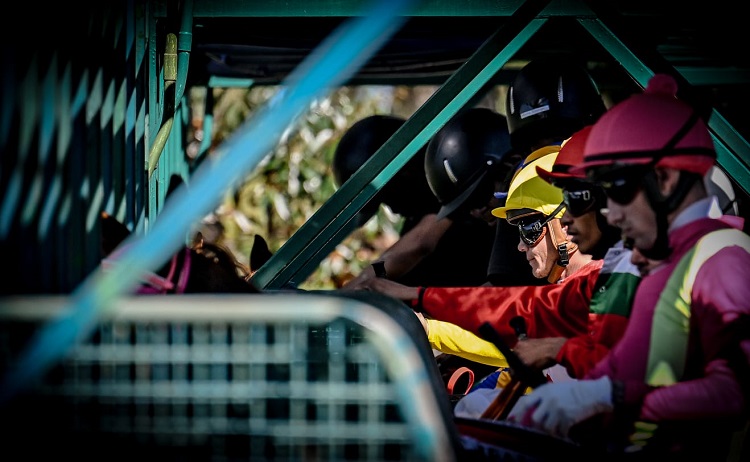
Chase Liebenberg Explains The Thinking Behind His Equus Award-winning Image
The Equus Still Photography award-winning photograph is shown above.
Chase Liebenberg was the recipient of the award and said, “It was an emotional evening. I believe this year the media categories were highly contested, far more than other years. But I’m glad that I could submit an image that sums up horse racing in a different and less literal way, something that defines the athletes and those moments before a race. The image was taken last year at Hollywoodbets Durbanville very soon after Richard Fourie said he was going for the championship. Little did we know where he would’ve landed up and also achieving what he did…”
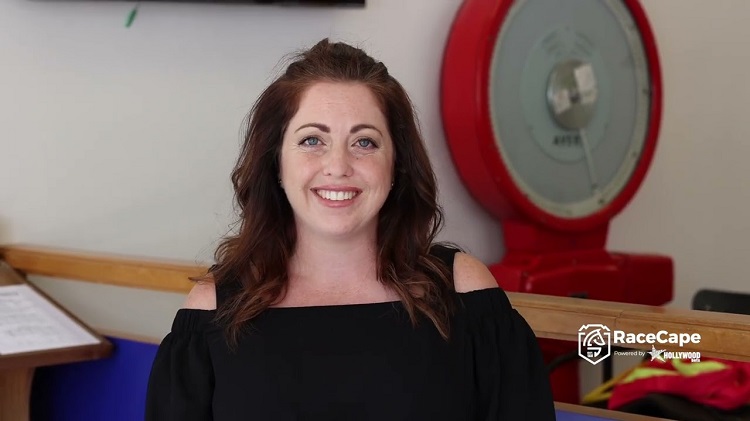
Vicky Minott's Broadcast Category Equus Award-winning Interview
The superbly structured questions by Vicky Minott, a former jockey turned racing presenter, led to a fascinating interview all in the space of 25 minutes meaning many would have had the time to watch the entire episode.
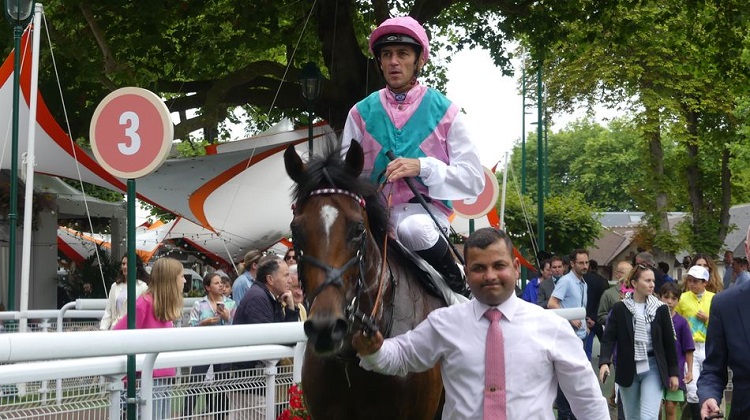
Nick Jonsson-owned Gr 3 Winner Entered In Ebor Handicap
Picture: the familiar Nick Jonsson cyclamen and spectrum green colours were worn by Christophe Soumillon when bringing home the William Haggas-trained Galileo colt Klondike in a Gr 3 over a mile and four-and-a-half furlongs at Deauville in France on August 3. Credit: Racing Post/Burton
The four-year-old Galileo colt Klondike, whom leading Durban owner Nick Jonsson owns in partnership with John Magnier, Michael Tabor and Fittocks Stud, is entered in the Ebor Handicap to be run over 1 mile 5 furlongs and 188 yards (2,787 metres) on Saturday August 24 at York, a race which holds win-and-you’re-in status for the Melbourne Cup.
However, he was automatically entered after winning a Listed race at York and Jonsson said he would not run in the Ebor because off an official rating of 114 he would have to carry too much weight (10 stone 2 pounds).
Klondike has struck as an out and out stayer from his debut when winning a maiden over a mile and three furlongs in soft going at Newbury.
He now has a useful staying record and has won three of eight starts, including a Listed event over a mile and six furlongs at York and a Gr 3 over a mile and four-and-a-half furlongs at Deauville in France on August 3.
CLICK HERE TO READ ABOUT HIS WIN AT DEAUVILLE
An encouraging aspect about Klondike’s future is that trainer William Haggas has discovered that contrary to his earlier predictions this horse needs good ground. Klondike used that to his advantage in the race at Deauville, run in good ground, where he ran handy and led two furlongs out.
His liking of faster ground will augur well if he does one day have a tilt at the Melbourne Cup.
Nick said that instead of the Ebor Klondike will probably be running in a Gr 2 event at Deauville on August 29.
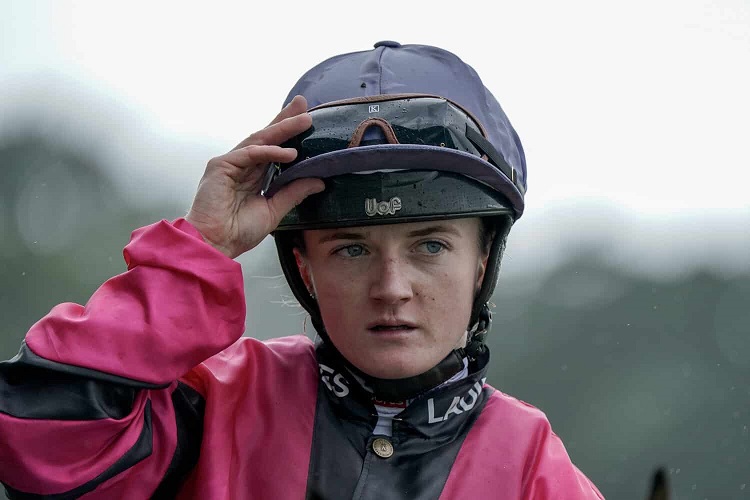
Hollie Doyle Provides Insight Into Her Weekend Rides
At The Races
Our ambassador previews her five rides at Newbury on Saturday and updates us on star sprinter Bradsell ahead of the Nunthorpe.
Thursday 15 August 2024
FRED DARLING HEROINE HAS HUNGERFORD CLAIMS
I’m intrigued to see how FOLGARIA acquits herself in the feature race of the day, the Group 2 BetVictor Hungerford Stakes (3.35) at Newbury on Saturday, live on Sky Sports Racing.
Unbeaten in Italy, she stretched her winning sequence to six when I won the Group 3 Fred Darling on her back in the spring when she had subsequent 1000 Guineas winner Elmalka back in third.
Watch every race on BetVictor Hungerford Day from Newbury live on Sky Sports Racing (Sky 415 | Virgin 519) on Saturday 17th August.
I’ve ridden her in both starts since, finishing out the back in the French Guineas before 1m appeared to stretch her stamina once again in the Coronation Stakes at Royal Ascot.
Dropping in grade and back over her winning course and distance, Marco Botti’s filly has the capability of running a big race in what looks an open renewal.
MYCONIAN CAPABLE OF BUILDING ON NEWMARKET RUN
I’m delighted to keep the ride on MYCONIAN after finishing second on him at Newmarket last month and we can make a bold bid to go one better in the Play The BetVictor Predictor Now Handicap (2.25) at Newbury.
Amy Murphy’s gelding posted his best performance of the year in a first-time tongue tie and cheekpieces combination on the July Course, which is understandably retained.
It’s a hot handicap but this Listed French winner is down to an attractive mark now and is capable of winning a race like this if he puts his mind to it.
OUT TO MAKE A POINT WITH ZABRISKIE
ZABRISKIE POINT has run two fair races since returning from a lengthy break and a gelding operation and can put up an improved display in the TPT Fire Handicap (3.00) at Newbury.
Charles Hills’ gelding showed up well for a long way in a 6f heritage handicap at Newmarket on his re-appearance before travelling well to a point in a 7f event at Glorious Goodwood.
A winner over this trip at Thirsk last autumn, the son of Blue Point is still high enough in the weights off his revised rating of 89 but can be competitive with a favourable high draw in his favour.
MORE TO COME FROM BOUBYAN
My boss Imad Alsagar’s colt BOUBYAN was too green to do himself justice on his only previous start in a Ffos Las maiden a couple of weeks ago but I’m expecting the outing to have brought him on when he re-appears in the British Stallion Studs EBF Maiden Stakes (4.05) at Newbury.
I’ve ridden the son of Churchill plenty of work on Andrew Balding’s Kingsclere gallops and always get the impression he learns from everything he does. He’s nicely drawn to improve on his debut effort in what looks a typically strong maiden.
Later, the weight for age allowance that BAS BLEU enjoys in the Chapel Down Handicap (4.40) at Newbury could be enough to see her in the mix.
Ed Walker’s daughter of Masar kept on well on her return from a four-month break in a 10f handicap at Sandown last month and can give the older stayers a race off her light weight.
ALL SYSTEMS GO FOR BRADSELL
Archie Watson’s sprint star BRADSELL is in great form ahead of next week’s Group 1 Nunthorpe Stakes at York.
That Listed win in France a couple of weeks ago has really put the edge on him and I’m looking forward to sitting on him again in preparation for his second attempt at the Knavesmire showpiece.
Bradsell was third in the race last year, when he found the track a little on the sharp side. They went flat out all the way as they always do in the Nunthorpe but I’m hoping he can add a second Group 1 to his already impressive CV.
PATTERN SUCCESS ON THE CARDS FOR JANE’S COLT
I was chuffed to finish second to a very exciting horse in France last weekend when I partnered Jane Chapple-Hyam’s SONS AND LOVERS in the Listed Prix Nureyev at Deauville.
I’d finished third on him in similar company at Newbury so expected him to go well – he was just unfortunate to bump into John and Thady Gosden’s exciting Ombudsman, who could be anything at this stage.
Sons And Lovers is a lovely stamp of a horse who can continue progressing and certainly looks up to winning a Group race on that evidence.
Hollie Doyle was speaking to Sky Sports Racing’s Simon Mapletoft.
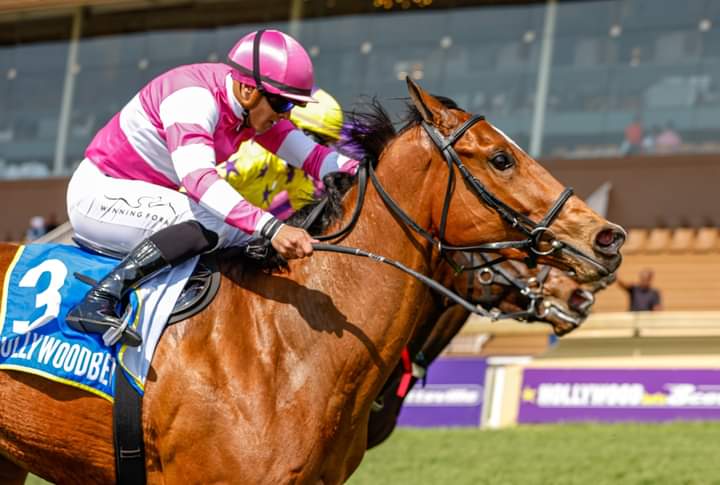
Hollywoodbets Scottsville Sunday Formguides And Selections
Spirited Flight has been tipped to win the 8th and last race (Candiese Lenferna Photography)
Gold Circle
R1 Summary: AYUWI YUWI (8) has shown up well in both starts on this course. She is also lightly raced and Athadiwe Mgudlwa has jumped ship on Blowin In The Wind to ride for Garth Puller. The lightly raced LIGHTINTHEDARKNESS (9) disappointed when trying further on the poly. Her best effort has been over course and distance and first time blinkers with Rachel Venniker’s allowance could see Dennis Bosch’s filly home. Frikkie Greyling will be looking to HURRICANE CAT (2) to break the ice and give him is first winner since taking out his trainer’s brief again. She is a fast filly with a quick action but ran out of steam late when touched off last run. The blinkers go on. BLOWIN IN THE WIND (4) is well tried but has shown ability and has a money chance. (Andrew Harrison: 8-9-2-4).
R2 Summary: Tricky maiden. JET LAVISH (9) has drawn a little wide but failed narrowly to cause a major boil-over at his last start when only caught late. Kom Naidoo likes his horses to race handy and the field will almost certainly be chasing. UMZOLOZOLO (7) has been improving with each outing. She has shown promise in both starts over course and distance and given more solid going she should make her presence felt. LAUGH TILL I CRY (1) has started favourite in two of her three starts and disappointed. He last two were in yielding going and from her pole position draw she could make amends. Alec Laird broke the seasonal ice last Sunday and sends out TUSCAN STAR (3). She raced green on debut but should come on from that effort. (Andrew Harrison: 9-7-1-3).
R3 Summary: QUANTUM (9) made a smart return to the track after a lengthy break when second in the Off To Stud Stakes over course and distance. She was closing fast on the well-weighted Mascherina and a repeat could see her go one better although the second run after a break does loom large. FAIZAH (4) goes well on this course and although down in trip she looks capable of another big effort. Gareth van Zyl has a second string to his bow in VIHAAN’S QUEEN (7). Her recent form has been on the poly but she is a winner over course and distance. BOSNAY (11) showed early promise but has been disappointing of late. A recent change of stables can ignite the spark in Kom Naidoo’s filly. (Andrew Harrison: 9-4-7-11).
R4 Summary: Dean Kannemeyer took a gamble in running FRENCH FLAME (9) in the Gr1 Premiers Champion Stakes on the last day of the season. The gelding only managed eighth place beaten six lengths but still garnered a seven-point penalty. His form before that was promising. Kannemeyer appears to have picked the right race but it remains to be scene if he can run up to his new mark. KITCHAKAL (7) was having his first run back for his original stable after a spell in the Cape when touched off by HARLEY STREET (10) and DOWN BY THE RIVER (8). He is now better off with both and has a much more forgiving draw. OFFICER IN COMMAND (3) beat COMMAND PILOT (4) when last they met and is still comfortably off at the weights! (Andrew Harrison: 9-7-3-4).
R5 Summary: PLAZA ACCORD (9) takes a big drop in class but also takes the corresponding jump in the weights. Although drawn widest, Peter Muscutt’s runner has useful form in strong company and looks the part. The gray VOLDEMORT (1) has drawn at the other end of the gates. Alyson Wright’s runner has been close-up ever since his last win and may need some relief from the handicappers to get back to winning ways. COPPER JOHN (3) was in need of his last run after a three-month break. He was not far off the winner and should strip a little fitter this time around. There should be very little between MT HENLEY (2) and PARMENION (4). Both have consistent form and it is a toss-up between the two. (Andrew Harrison: 9-1-3-4).
R6 Summary: SUN RIOT (1) had shown some promise before his last run in the Gr2 Golden Horseshoe. That run is best ignored as his rider rode with a broken stirrup leather. He has the best of the draw and may well prove a cut above this field. PHUTULICIOUS (4) hardly runs a bad race and both wins have come over course and distance. He should pick up the pieces if Sunset Riot does not run up to expectations. UNITED NATION (6) never featured in the Gr1 Gold Medallion but was obviously regarded good enough to contest the race by Glen Kotzen after a comfortable maiden win on the poly. BUGALUGS (2) is lightly raced and made a useful handicap debut. (Andrew Harrison: 1-4-6-2).
R7 Summary: Wide open handicap. BUSTER KEATON (5) has been dropping in the handicap and Andre Nel’s runner could now be off a more competitive mark. He does take on a modest line-up. FIRE TONIC (8) has been taking on slightly stronger of late. His last two wins have come over course and distance although Stuart Ferrie’s gelding shoulder a big weight. BRAVE VOYAGER (4) has been up and down in distance on the poly of late. He will be dangerous on his best form. COTTON RON (1) took on stronger last outing but was close-up in this company at his penultimate start. Louis Goosen’s stable is in good form. (Andrew Harrison: 5-8-4-1).
R8 Summary: Tricky race to close. Mark Dixon sends out SPIRITED FLIGHT (4) who looks well weighted for this event. Her last three runs have been in yielding going and with a handy galloping weight should make her presence felt. RAFEEF’S CHOICE (3) has been close-up in both recent starts over course and distance but does have the steadier of 61kg to shoulder. EMERALD GREEN (10) has been coming to hand nicely and looks primed for a big effort. ASPOESTERTJIE (2) was staying on well over an extra furlong last time out but she is quick and has a money chance. (Andrew Harrison: 4-3-10-2).
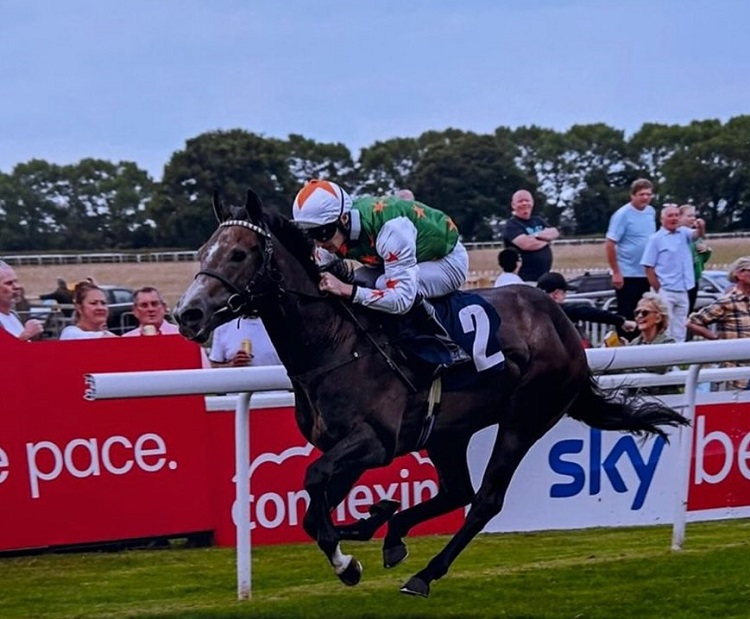
Cunha Holds One Entry At York
Sensorium winning easily at Beverley last time out (via meta)
Dylan Cunha holds an entry in the £249,908 Harry’s Half Million By Goffs Premier Yearling Stakes over six furlongs for two-year-olds at the big York Ebor meeting next Thursday.
He runs the Kodiac colt Sensorium, who was purchased for £40,000 at last year’s Goffs Premier Yearling Sale.
The grey colt made his fourth career start over five furlongs at Beverley on July 22 and won from start to finish by 3,75 lengths under Rhys Clutterbuck at odds of 11/8 in the Maiden Stakes race.
There are 33 entries in the lucrative race next Thursday.
Howeever, there is a maximum field of 22.
He was given a 91 Racing Post Rating for his win so should get into the field on that.

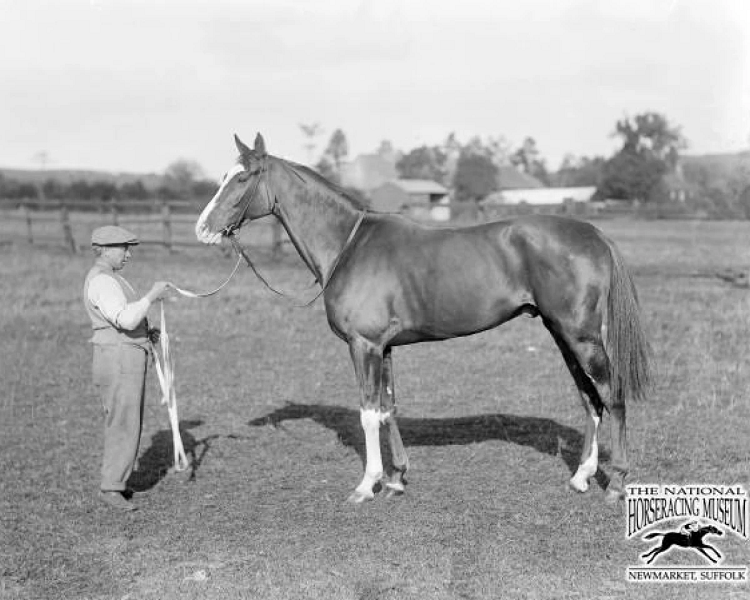
Today’s Question
The picture gives a clue to the answer.
What hasn’t happened in the iconic Ebor Handicap for over 100 years and won’t happen this year?
Today’s Question Answer
Picture: Flint Jack (image: rimondo.com)
The only horse to ever win the Ebor Handicap twice was Flint Jack, who did it in 1922 and 1923.



